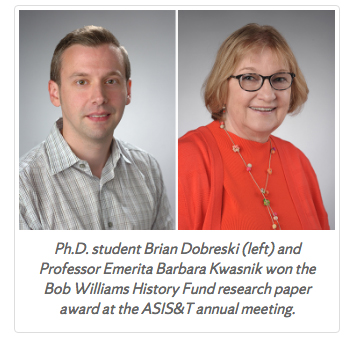Professor Shikha Nangia Named as the Milton and Ann Stevenson Endowed Professor of Biomedical and Chemical Engineering
The College of Engineering and Computer Science (ECS) has announced the appointment of Shikha Nangia as the Milton and Ann Stevenson Endowed Professor of Biomedical and Chemical Engineering. Made possible by a gift from the late Milton and Ann Stevenson,…


 The idea won honors from ASIS&T’s “Culture, Community and Voice in Knowledge Organization Systems” subcommittee. It was presented by School of Information Studies Assistant Professor
The idea won honors from ASIS&T’s “Culture, Community and Voice in Knowledge Organization Systems” subcommittee. It was presented by School of Information Studies Assistant Professor  Kwasnik/Dobreski Paper Honored
Kwasnik/Dobreski Paper Honored